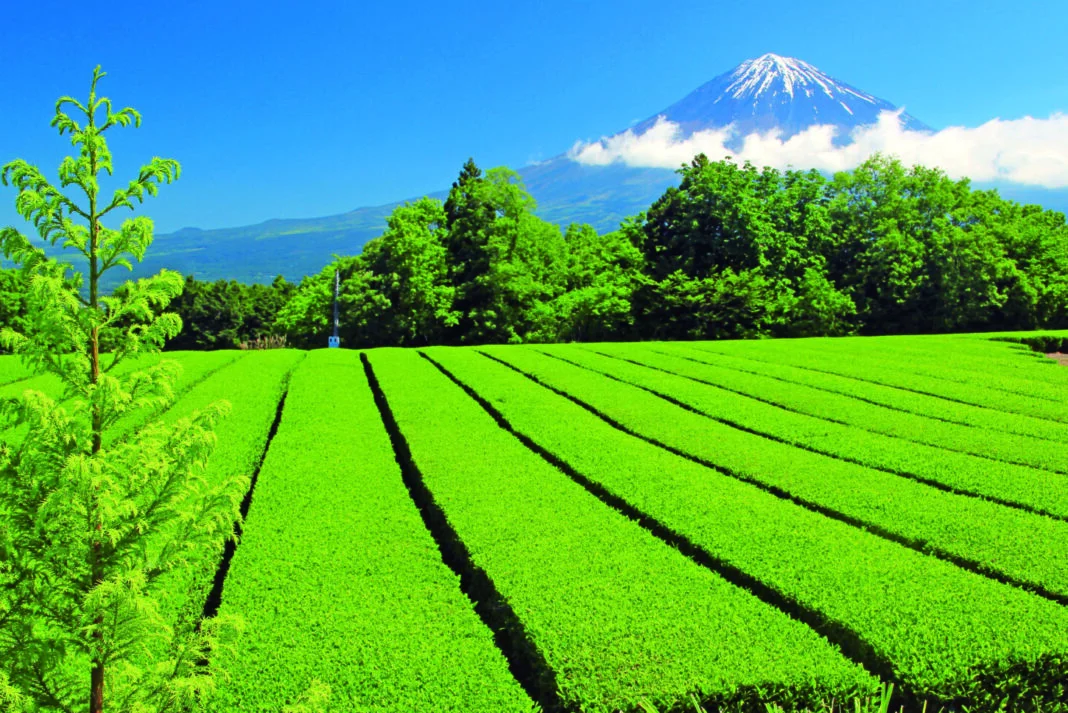Shizuoka Prefecture is considered the nation’s capital of tea production, accounting for over 40% of tea plantations in Japan.
The history of tea cultivation can be traced back to the Kamakura period, when a monk named Shoichi Kokushi, who traveled to the Song dynasty China to study Buddhism, brought back tea seeds and began planting them in present-day Ashikubo in Aoi Ward, Shizuoka City, Shizuoka Prefecture.
Fast-forward several hundred years to 1867, when Tokugawa Yoshinobu, the 15th shogun of the Edo shogunate, returned to power for the restoration of Imperial rule and relocated his residence from Edo (present-day Tokyo) to Sunpu (present-day Shizuoka City). At that time, about 300 shogunate vassals, who traveled with Yoshinobu to Shizuoka Prefecture, reclaimed the Makinohara Plateau, which had been part of the shogunate’s territory, and began cultivating tea there.
In addition to the Makinohara Plateau, there are more than 20 tea production areas in Shizuoka Prefecture, including the Abe River, Oi River, and Tenryu River basins, Iwatahara (Iwata City), Mt. Ashitaka (Numazu City), and the foothills of Mt. Ogasayama (Fukuroi City) and even today, the production of high quality tea is still flourishing.
In Shizuoka Prefecture, there are many facilities where visitors can not only taste tea but also enjoy experiencing the world of tea.
Here you can compare the balance of sweetness, astringency, and bitterness of sencha and matcha teas, pick tea leaves while enjoying their gentle aroma, indulge in sweets made with tea, and experience the world of tea in some of Japan’s leading tea-producing regions.
○Izu Area
Kuraya Narusawa (Izunokuni City)

Kuraya Narusawa boasts a long history of tea cultivation, and tea picking can be enjoyed during the spring and fall. The observatory located within the tea plantation, offers a fantastic double view of Mt. Fuji and the Nirayama Hansharo (Nirayama Reverberatory Furnaces), which have been both designated as World Heritage sites.
At the annexed “Hansharo Beer Restaurant Homura,” visitors can enjoy charcoal-grilled dishes, craft beer, and soft-serve ice cream made with shincha tea (tea that comes from the first harvest).
○Central Area
Sunpu Castle Park Momijiyama Garden and Teahouse (Shizuoka City)
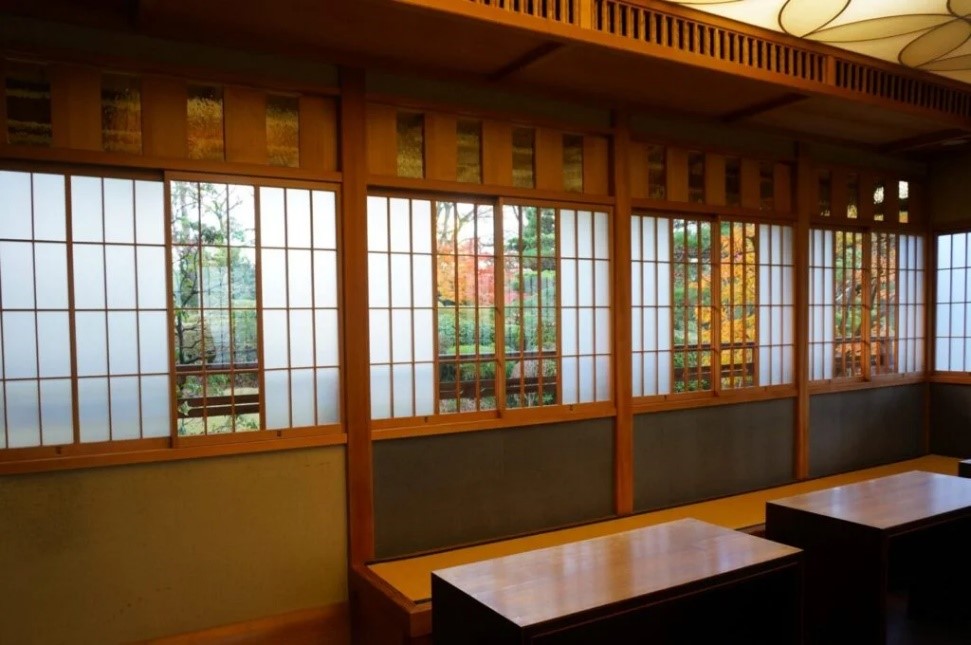
Momijiyama Garden, located within Sunpu Castle Park, has the dignified air of a feudal lord’s garden from medieval times and features a pond with a circular path through the garden, which you can enjoy while walking around the park. The garden, which is surrounded by seasonal flowers such as cherry blossoms in spring and autumn leaves in fall, is so quiet that you you’ll forget that you’re in the center of Shizuoka City. In the teahouse, you can enjoy an authentic tea ceremony in a quiet and peaceful atmosphere.
For more information, click here.
Gyokuro no Sato Hyougetsutei (Fujieda City)
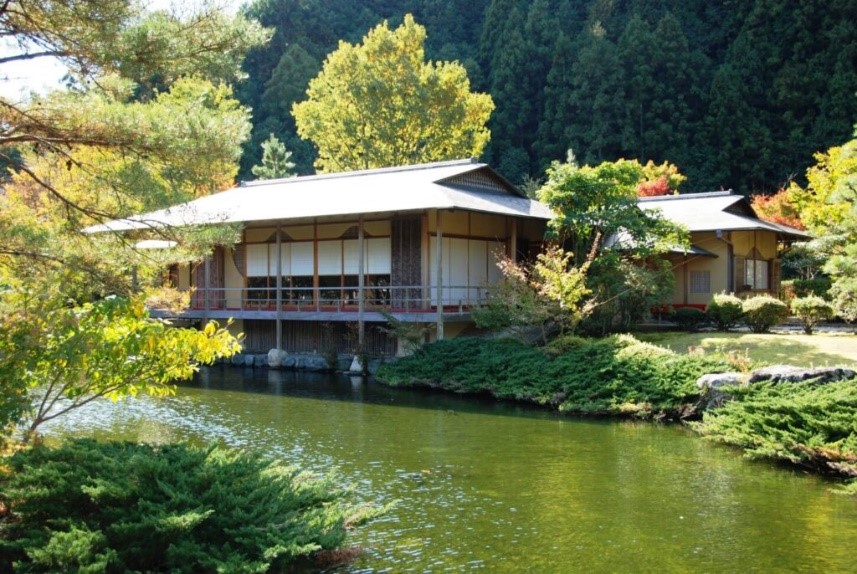
The Asahina district in Okabe, where Gyokuro no Sato is located, is one of the three major gyokuro green tea producing areas, along with Uji (Kyoto) and Yame (Fukuoka). Here at Gyokuro no Sato, you can enjoy the mild flavor and elegant aroma of gyokuro green tea from this region, which is widely considered to be the best in Japan.
For more information, click here.
Fujinokuni Cha no Miyako Museum (Shimada City)
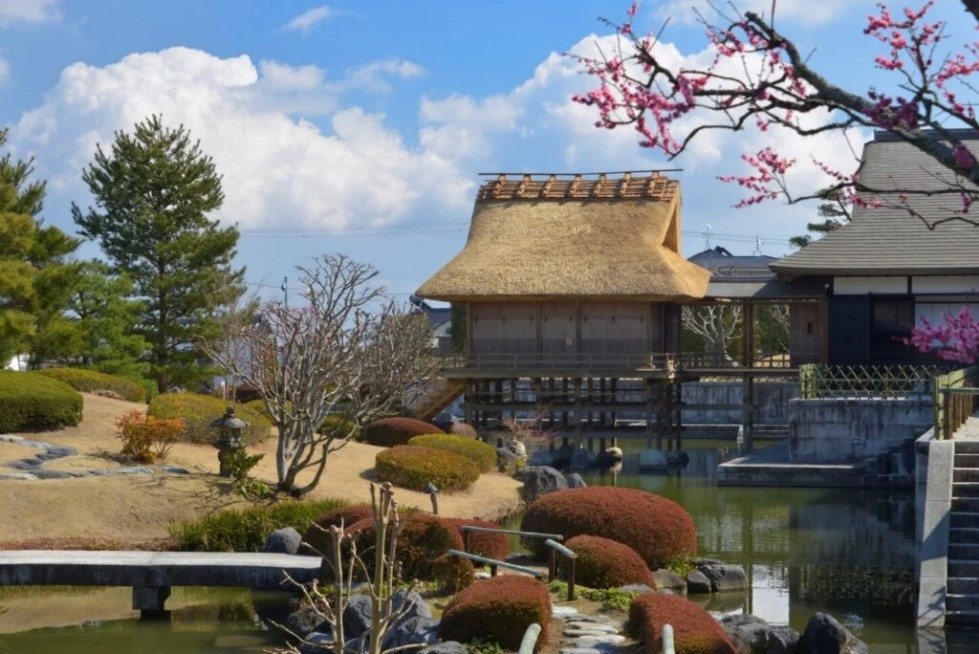
Here at the Fujinokuni Cha no Miyako Museum, visitors can learn all about tea, Shizuoka Prefecture’s local specialty. In addition to exhibits on the history, culture, and production methods of Shizuoka tea, visitors can also enjoy tea-related experiences such as tea tasting, matcha (powdered green tea) grinding, and tea picking. Visitors can also experience an authentic tea ceremony in a teahouse associated with famed tea master Kobori Enshu, while taking in Enshu’s style of “kirei sabi” (the Japanese aesthetic of elegant beauty invented by Kobori Enshu). The museum shop sells many products that utilize the taste and benefits of tea. Be sure to try variety of sweets made with tea, including ice cream and chocolate.
For more information, click here.
KADODE OOIGAWA (Shimada City)

Kadode Ooigawa is an experience-based tea and agriculture theme park directly connected to Kadode Station on the Oigawa Railway. Many attractions are offered at the park, including the “Green Tea Tours” where visitors transform into tea leaves by wearing green ponchos and experience the process of tea production, the “Green Tea B.I.Y. Stand” where visitors can choose their favorite tea leaves from 16 kinds of tea and brew their original tea, the “Chamikuji” (tea fortune slip) where visitors can draw a fortune slip and leave it up to luck to decide what type of tea to drink that day, as well as other attractions to enjoy and experience the charm of tea.
For more information, click here.
Fauré Nakakawane Chameikan (Kawanehoncho Town)
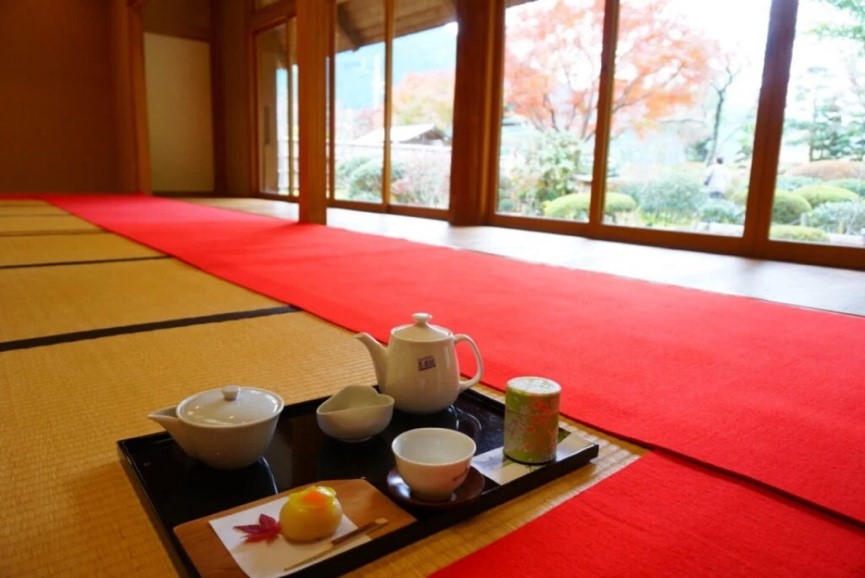
Kawanehoncho, which is located at the foot of the Southern Alps, is one of the leading tea production areas in Shizuoka Prefecture and is known by its original Kawanecha brand tea. In the teahouse of the Fauré Nakakawane Chameikan, visitors can enjoy tasting Kawanecha along with some of Kawanehoncho’s famous sweets.
At the “Midori no Tamatebako” souvenir shop, handmade sweets made with Kawanecha, shiitake mushrooms, and other specialty products unique to Kawanehoncho are available for purchase.
For more information, click here.
Grinpia Makinohara (Makinohara City)
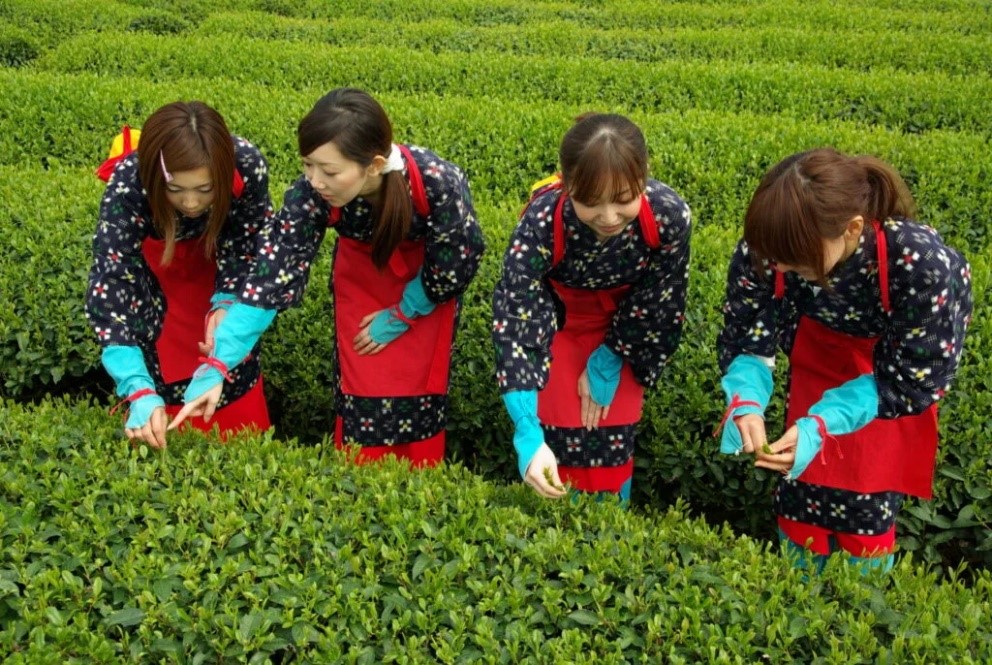
Grinpia Makinohara is an experience-based tea-themed facility where visitors can tour a tea factory and experience picking tea. It is operated by Kisakuen, the manufacturer of Nanaya, which is known for its “world’s richest matcha gelato.” After the factory tour, be sure to try Nanaya’s popular tea sweets at the “Nanaya sud-ouest Makinohara” Tea Cafe located next-door.
For more information, click here.
○Western Area
Kakegawa Castle Park Ninomaru Tea House (Kakegawa City)
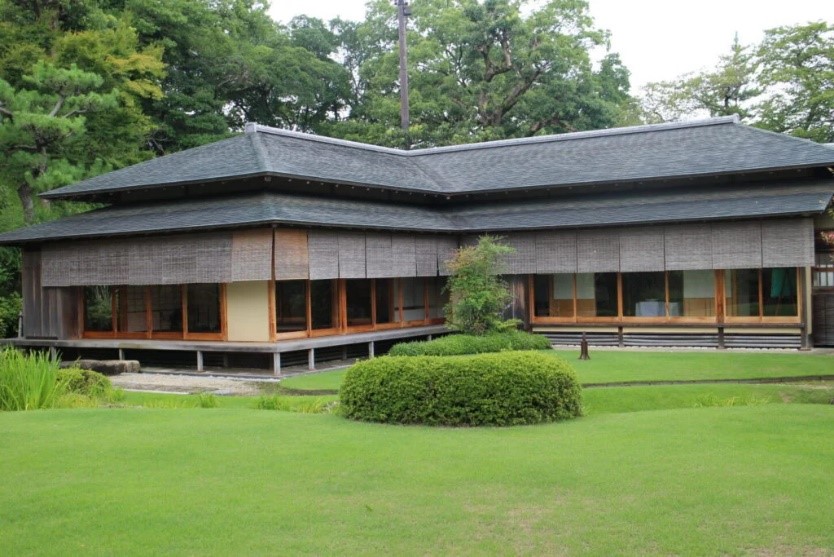
The Ninomaru Tea House located within Kakegawa Castle Park is a wooden one-story building constructed with a traditional Japanese sukiya-style design. Here you can enjoy a cup of Kakegawa tea while taking in the super view of the Kakegawa Castle Tower and Japanese garden. Please be sure to stop by on your way home from visiting Kakegawa Castle.
For more information, click here.
Hamamatsu City Tea House Shointei (Hamamatsu City)

Located within Hamamatsu Castle Park, Shointei is a teahouse constructed with a modern suki-style design made of Japanese cedar, chestnut, and other fine woods. The Shointei teahouse, where visitors can enjoy matcha or ryokucha tea depending on the day, offers Western-style seating with tables and chairs, so please be sure to stop by when visiting Hamamatsu Castle or Hamamatsu Castle Park.
